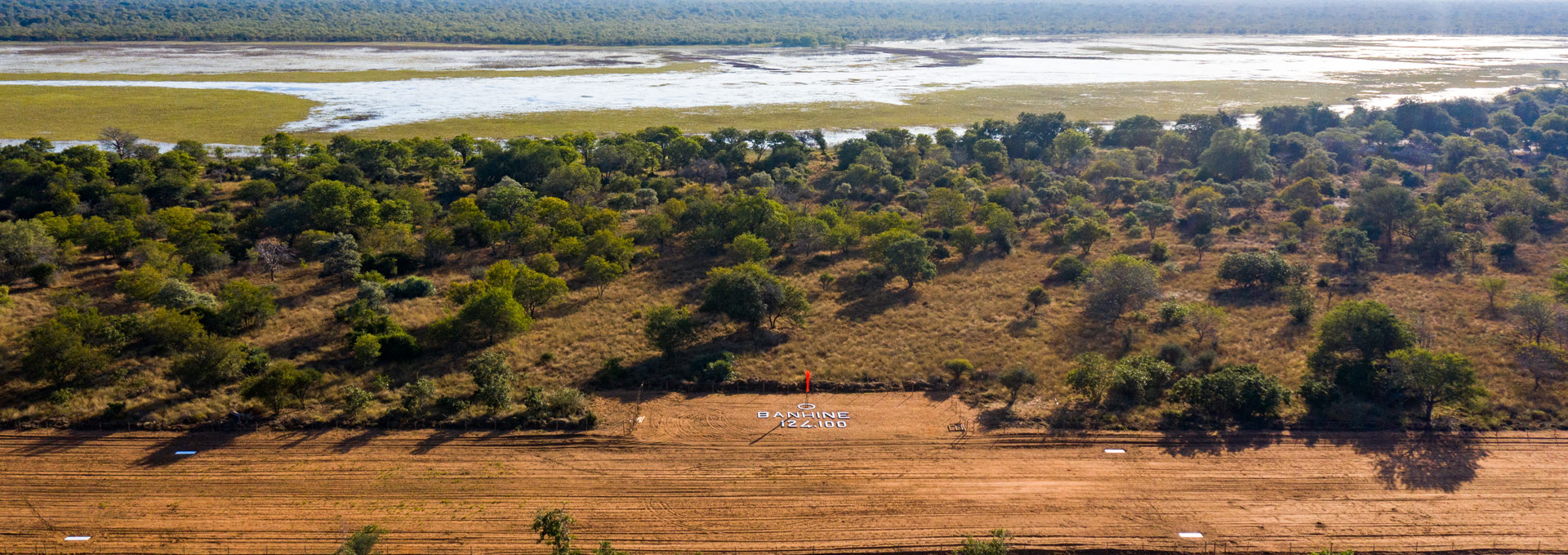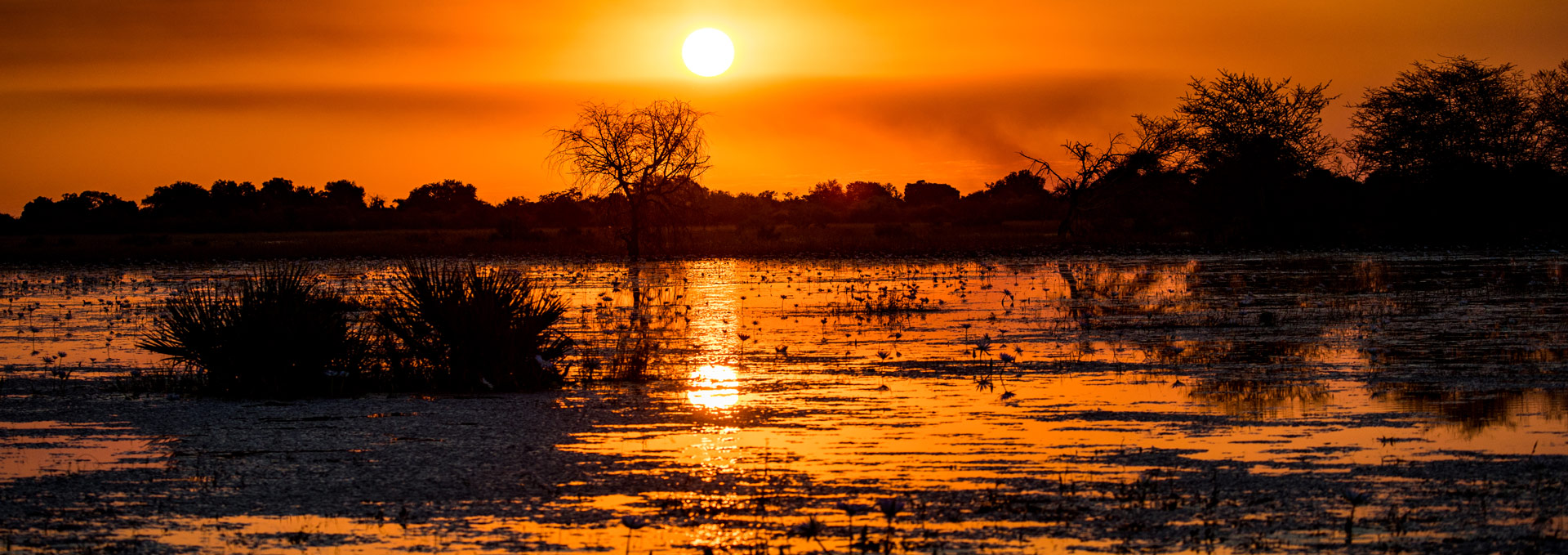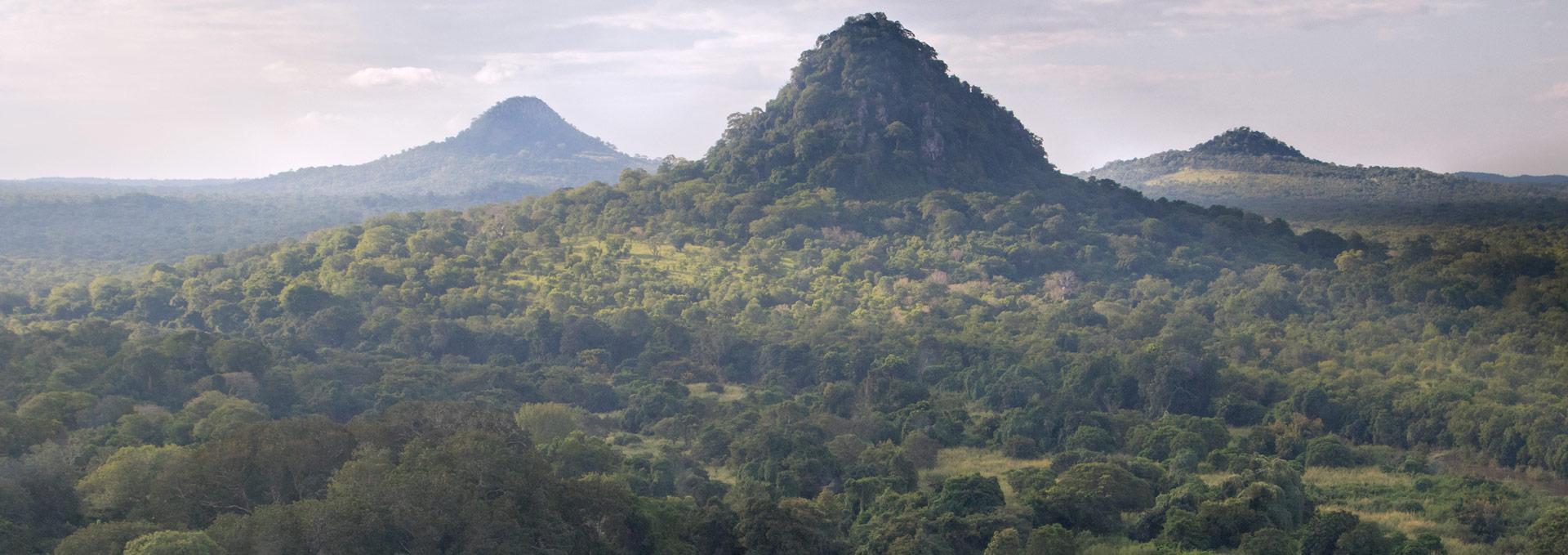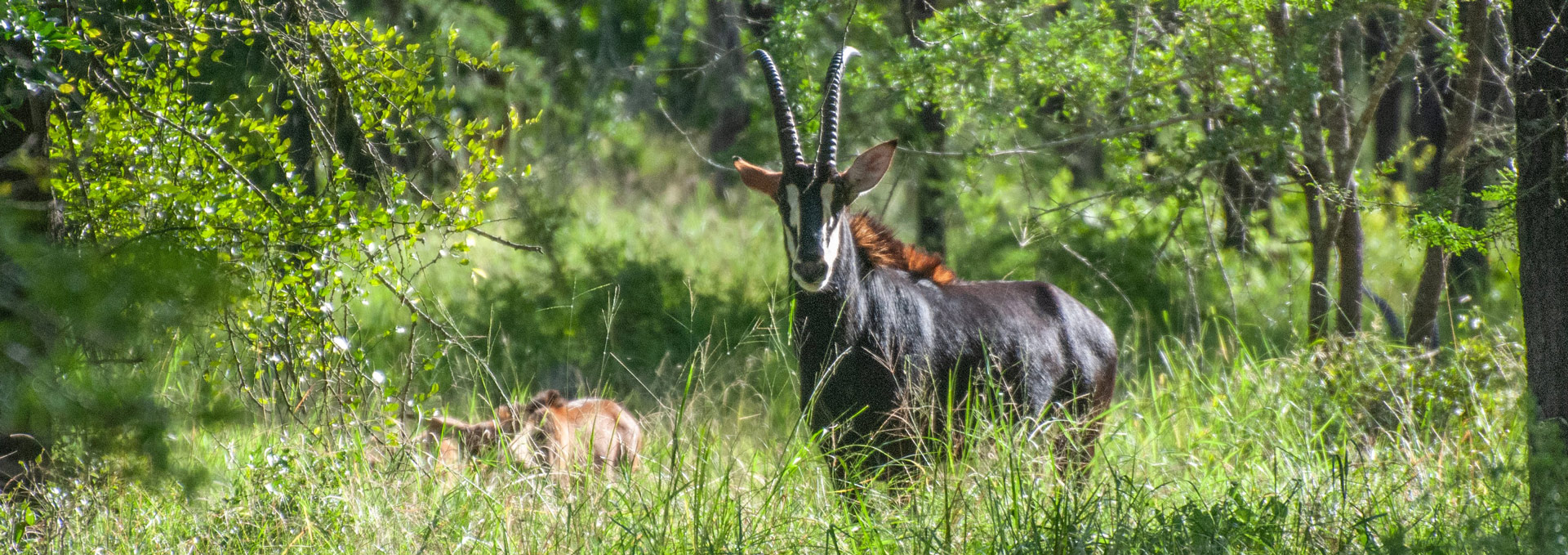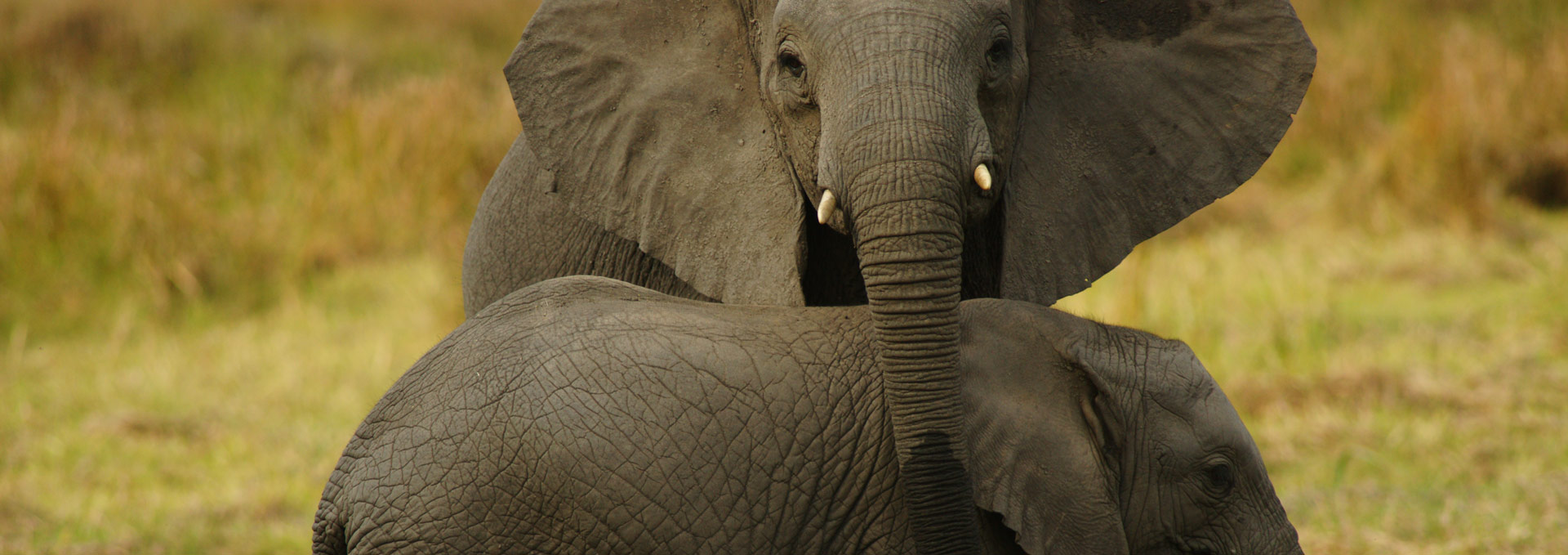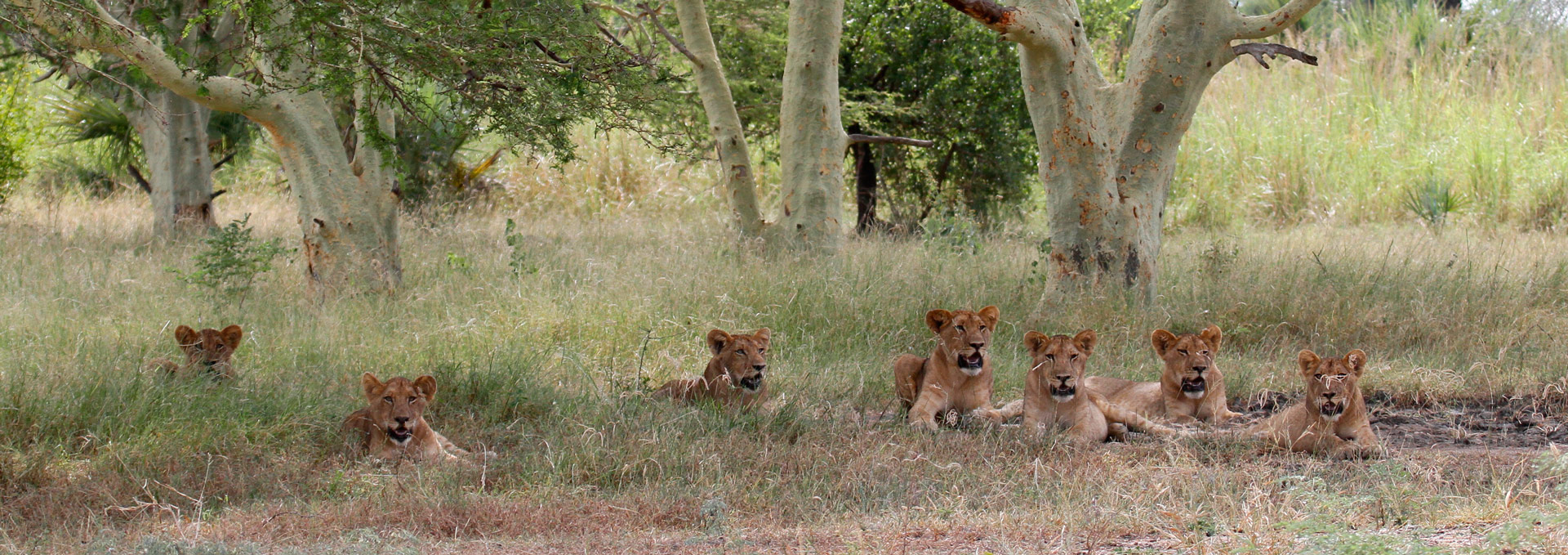Updated at 22/04/2024
Covering about 26% of the national territory, Conservation Areas serve as habitats for numerous species of fauna and flora with local, national, and global ecological value. Fundamental for the reproduction and development of species, Conservation Areas protect the natural, cultural, and socioeconomic environments of the country. In Mozambique, the management of the national network of conservation areas is conducted by the National Administration of Conservation Areas (ANAC), an entity under auspices of the Ministry of Land and Environment (MTA). BIOFUND was established in 2011 as a financial mechanism to support the operational costs of the Conservation Areas, having disbursed more than $25 million since 2016 towards Conservation Areas.
According to the Regulation of Law No. 16/2014 of June 20, the Law on the Protection, Conservation, and Sustainable Use of Biological Diversity, amended and republished by Law No. 5/2017 of May 11, Conservation Areas, including other types of protection zones, are classified into different categories based on the level of protection. This array of conservation area categories in Mozambique includes distinct ecosystems, both terrestrial and marine, which harbor a unique and special biological diversity that plays a very important role in providing environmental, social, cultural, and economic services.
Conservation Areas are managed by both the private and public sectors, including the increasingly common modality of co-management (usually public-private). The public sector manages National Parks, Special and National Reserves, and Community Conservation Areas, with or without technical and financial partnership agreements or co-management. Other categories of Conservation Areas, including Official Hunting Areas, Wildlife Farms, and Hunting Blocks, which are generally areas intended for the development of hunting tourism, are managed by the private sector, still within the ANAC management framework. Additionally, there are Forest Reserves managed by DINAF.
There is a commitment to expand and conserve at least 10% of coastal and marine areas globally by 2030 , thus enhancing the economic benefits derived from the sustainable use of marine resources, boosting scientific knowledge, conducting research, and transferring marine-based technologies. These and other goals are part of Sustainable Development Goal 14 (SDG 14), which is one of the 17 SDGs of the United Nations’ 2030 Agenda, of which Mozambique is a signatory. In 2020, the Government of Mozambique and the Key Biodiversity Areas (KBAs) Secretariat designated 29 KBAs in Mozambique, of which 84.5% are under some form of formal protection, and 15% have yet to be granted a formal protection status.
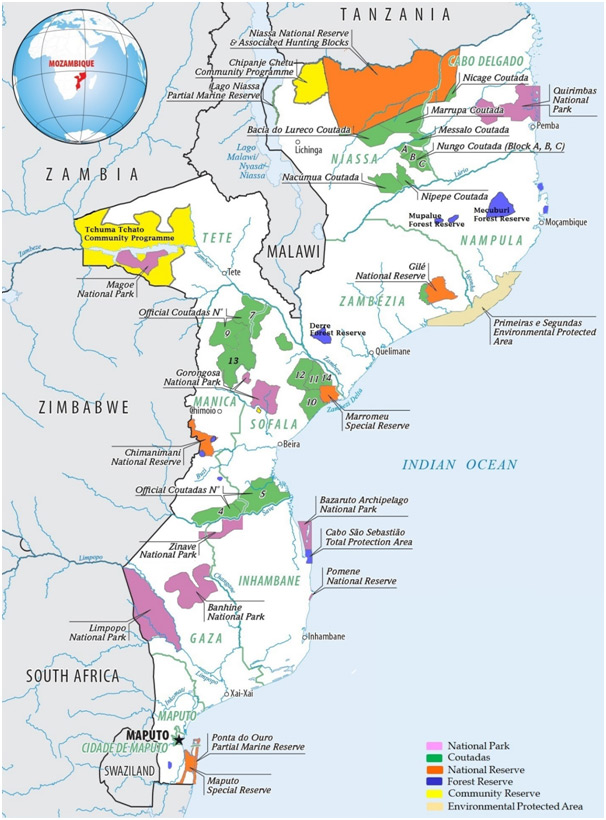
“The preservation of biodiversity is not just a job for governments. International and non-governmental organisations, the private sector and each and every individual have a role to play in changing entrenched outlooks and changing destructive patterns of behaviour.”
Kofi Annan

